by Rajan P. Parrikar
First published on SAWF on October 29, 2001
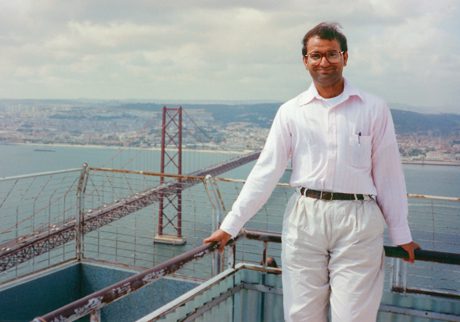
Rajan P. Parrikar (Lisbon, 1991)
Namashkar.
Some weeks ago, a query surfaced on the Usenet newsgroup rec.music.indian.classical, seeking insights into Raga Charukeshi — a relatively recent migrant from the Carnatic parampara into the Hindustani fold. This abstract is offered in response.
Our discussion will be concise, limited to examining the scale’s assimilation and evolution within the Hindustani system. Given its relative novelty, Charukeshi remains in a formative phase, an uncrystallised entity in the Hindustani imagination. As such, no single interpretation reigns supreme. To explore this dynamic, we will consider four distinct viewpoints, identifying areas of melodic convergence and divergence.
This treatment is intended as a primer, highlighting key features rather than presenting an exhaustive analysis.
The need for a rigorous comparative study of shared melodic frameworks in the Hindustani and Carnatic systems cannot be overstated. To date, such efforts have been few, and when not consigned to the inept, they have fallen victim to mediocrity.
Raga Charukeshi is a janya of the 26th melakarta of the same name with the following set: S R G M P d n, where M = shuddha madhyam.
Faced with a ‘new’ scale set, there are several ways to go about constructing a raga. The Hindustani instinct is to view the constituent poorvanga and uttaranga portions of the scale in terms of already familiar templates. Thus, for instance, the poorvanga cluster, S R G M, suggests itself as a staging ground for Nat-like behaviour. That would entail positing a powerful madhyam with concomitant dilution of gandhar (eg. Jha).
An alternative is to advance the gandhar to evolve a different swaroopa (eg. Ravi Shankar, Vijay Raghav Rao et al). Similarly, the uttaranga opportunities readily sought by the Hindustani mind are Asavari (and through it, Darbari-like behaviour) and Bhairavi. The strength and importance of the dhaivat (nyasa sthana) seems to have been appreciated by all. The vault in avarohi sangatis – S, (n’)d’ – brings in a fleeting avirbhava of Darbari but since the full Darbari machinery is not employed the promise remains unfulfilled. Bridging the poorvanga-uttaranga interface is yet another familiar phrase fruitfully exploited: the definitive Bhairav cluster – G M d, d, P. These are some of the favoured lakshanas to look for in Hindustani accounts of Charukeshi.
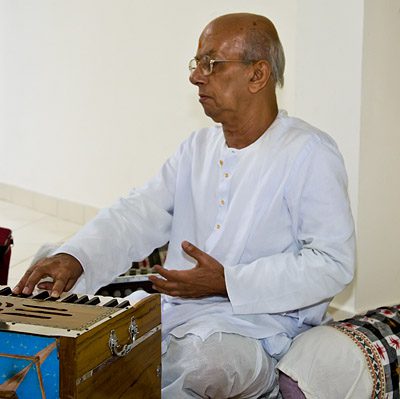
Ramashreya Jha “Ramrang” at the author’s home in Goa
(© Rajan P. Parrikar)
We have with us an especially fortunate set of clips that provide a snapshot of the raga’s evolution as it passes through the creative filters of two great vaggeyaksras in Jha and Ratanjankar, and a superlative performer in Amir Khan. A clip of Vijay Raghav Rao ropes in Ravi Shankar‘s interpretation.
But first, we warm up to the scale through a sequence of ‘light’ compositions in this quick run-up.
Lata Mangeshkar‘s recites verses from the Bhagvad Geeta (adhyaya 9-12) tuned by Hridaynath Mangeshkar.
The composer duo, Kalyanji-Anandji, have pressed the Charukeshi scale to good use in a few songs. Here we present a couple of them. From HIMALAYA KI GOD MEIN (1965), Lata Mangeshkar: ek tu jo mila.
Mukesh and Lata in MERE HUMSAFAR (1970): kisi raha mein.
The very popular Shankar-Jaikishen number from ARZOO (1965) by Lata: bedardi balama.
Charukeshi-like elements are also found in the ethnic music of Western Europe, as witness this ditty by Shri Franz Schubert from his Impromptu (First piece “Allegro Molto Moderato” from his Op 90).
Final confirmation that the West owes its musical ideas to India comes from the Russian Mikhail Ippolitov-Ivanov: “Procession of the Sardaar,” from his “Caucasian Sketches for Orchestra.” This is an NPR recording from Dec 1966, by the Philadelphia Symphony, Eugene Ormandy conducting.
From the adolescent efforts of Western ethnic musicians we once again soar to the Himalayan heights of Indian classical music.
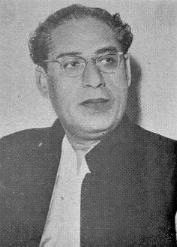
Amir Khan
Amir Khan‘s manner of dhaivatic approach and attack stands out. There is the R G M R S type of movement, also heard in Nat Bhairav; and the Bhairav-esque G M d, P. Take note of the n’SRSd’ and d’n’R S Darbari chhayas not to mention the bright, mukta madhyam. The composition is Amir Khan’s own. The ustad was closely associated with the Vallabhacharya sampradaya (Pushti Marg) and has dedicated this bandish to Vallabhacharya’s son “Gusain.” For more, see the Hindi biography, Ustad Amir Khan by Ibrahim Ali (2000), Classical Publishing Company, New Delhi: laja rakho tuma mori Gussaiyyan.
S.N. Ratanjankar‘s conception is strong on pancham. The advance is through S (G)R G, M P. Another standout is the SRGMPMGR cluster. The Darbaric n’SRSd’ is also heard. Special sancharis – GMPdn, d, P and G M n d, P – reach out to komal nishad and retreat. Ratanjankar was very familiar with the conceptual foundations as well as the practice of Carnatic music and one wonders if his treatment retains any of the original Carnatic flavour. K.G. Ginde delivers the bandish, set in Tilwada tala: naiyya pari majhdhar.
Ramashreya Jha “Ramrang” has composed a whole suite in Charukeshi and the two compositions presented here are masterpieces. He places a premium on madhyam. There are Nat-like phrases such as SR RG GM, in the poorvanga as also the Bhairav effect via G M d, P. Pancham is skipped occasionally in avarohi sangatis (d M). The dominance of dhaivat, pancham and madhyam is evident.
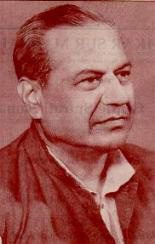
K.G. Ginde
The lyrics of Ramrang’s package are drawn from the famous Ramayana prasanga involving Shri Rama’s encounter with the boatman. The vilambit places its sam on mandra dhaivat (like Amir Khan does). It is an exquisite composition; the matra of the tala and the swara are closely coupled as they should be in a well-conceived bandish: Raghuvara raja naiyya na chadha’oon.
The mukhda of the druta bandish has a quirk that is commented on by Jha-sahab in the clip. He demonstrates the intuitive way of doing it and then the way it actually is – off by a beat. These are superb compositions and deserve a wider embrace on the concert circuit: hamari tumari Rajan.
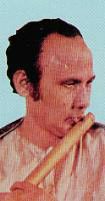
Vijay Raghav Rao
We round off this excursion with a beautiful piece on the flute by Vijay Raghav Rao. The premium in the poorvanga is on the gandhar.
Acknowledgements
I thank Sir Vish Krishnan for his assistance in compiling the ‘light’ pieces, and Anita Thakur for putting the article together.
